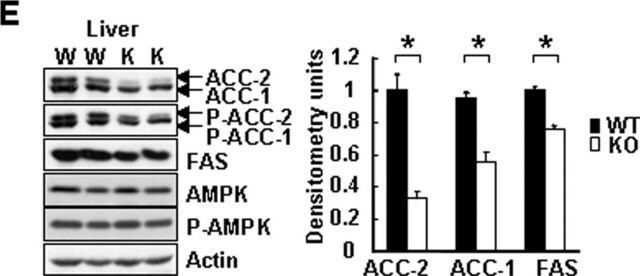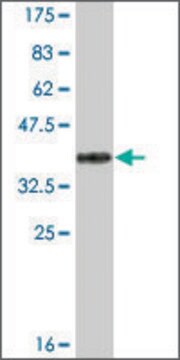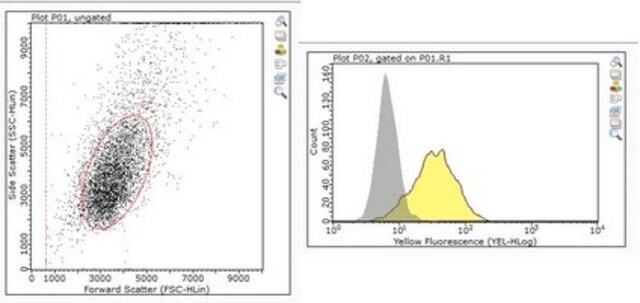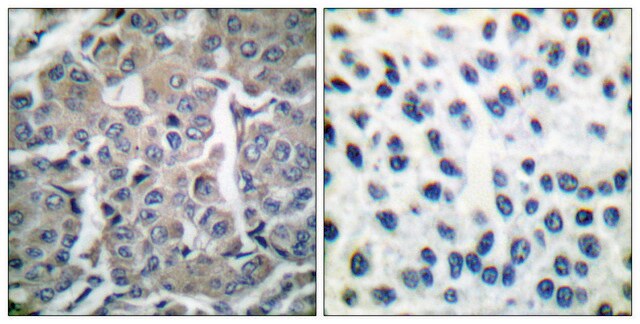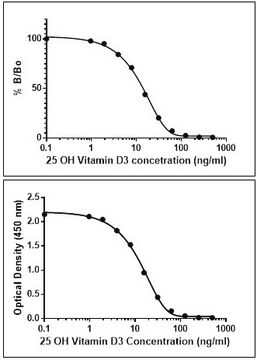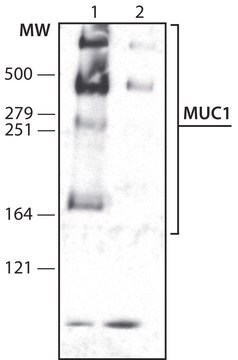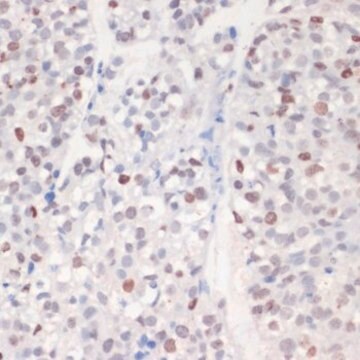05-1098
Przeciwciało przeciwko karboksylazie acetylo-CoA, klon 7D2.2
clone 7D2.2, from mouse
Synonim(y):
karboksylaza acetylo-CoA 1, karboksylaza acetylo-CoA alfa, karboksylaza acetylo-koenzymu A alfa
About This Item
Polecane produkty
pochodzenie biologiczne
mouse
Poziom jakości
forma przeciwciała
purified immunoglobulin
rodzaj przeciwciała
primary antibodies
klon
7D2.2, monoclonal
reaktywność gatunkowa
human, rat
metody
western blot: suitable
izotyp
IgG2aκ
numer dostępu NCBI
numer dostępu UniProt
Warunki transportu
wet ice
docelowa modyfikacja potranslacyjna
unmodified
informacje o genach
human ... ACACA(31)
rat ... Acaca(60581)
Opis ogólny
Immunogen
Zastosowanie
Analiza Western Blot (SNAP ID): 1 µg/mL z poprzedniej partii wykrył karboksylazę acetylo-CoA na 10 µg lizatu ludzkiego serca.
Sygnalizacja
Sygnalizacja insuliny/energii
Jakość
Western Blot Analysis: 1 µg/mL of this antibody detected acetyl CoA Carboxylase on 10 µg of human heart lysate.
Opis wartości docelowych
Powiązanie
Postać fizyczna
Przechowywanie i stabilność
Komentarz do analizy
Lizat ludzkiego serca
Inne uwagi
Oświadczenie o zrzeczeniu się odpowiedzialności
Nie możesz znaleźć właściwego produktu?
Wypróbuj nasz Narzędzie selektora produktów.
polecane
Kod klasy składowania
12 - Non Combustible Liquids
Klasa zagrożenia wodnego (WGK)
WGK 1
Temperatura zapłonu (°F)
Not applicable
Temperatura zapłonu (°C)
Not applicable
Certyfikaty analizy (CoA)
Poszukaj Certyfikaty analizy (CoA), wpisując numer partii/serii produktów. Numery serii i partii można znaleźć na etykiecie produktu po słowach „seria” lub „partia”.
Masz już ten produkt?
Dokumenty związane z niedawno zakupionymi produktami zostały zamieszczone w Bibliotece dokumentów.
Nasz zespół naukowców ma doświadczenie we wszystkich obszarach badań, w tym w naukach przyrodniczych, materiałoznawstwie, syntezie chemicznej, chromatografii, analityce i wielu innych dziedzinach.
Skontaktuj się z zespołem ds. pomocy technicznej